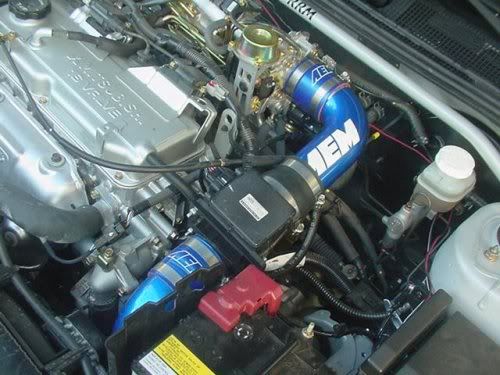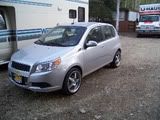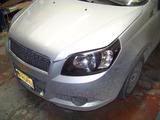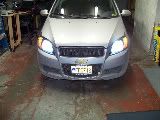Cold Air Intakes vs. Short Ram Intakes:
Short Ram Intakes (SRI)

Description
An aftermarket SRI is basically a short pipe and filter that replaces the restrictive stock airbox. Usually consists of 1 pipe, a cone filter, appropriate silicone couplings, and adapter plate for the Mass Airflow Sensor(MAS). A coupling would connect one end of the pipe to the throttle body. Another coupling connects the other end of the pipe to the MAS. The MAS would then have an adapter plate to connect the cone filter to the end of the MAS. A hose is supposed to connect the intake pipe to one end of the valve cover. This is to relieve and recirculate some of the oil and pressure buildup within the valve cover.
Power Characteristics
Due to the short length air has to travel to get to the engine cyclinder, throttle response is fast. Unfortunately, that doesn't always mean that you will have power immediately after flooring it. Pipe diameter has a lot to do with it. An intake with smaller piping will have better torque in the low and mid-range while larger piping will have a lazy low to mid-range and have better top-end power. If you want some of your torque, stick with the stock 2.5" diameter piping or stock elbow as part of the sri. If you want to sacrifice low-end for some top-end power, move up to 2.75"-3" intake piping.
Down-sides to a SRI
The fact that the SRI still resides within the engine bay is bad. Reason being, hot air produced by the engine is being sucked into the intake. Hot air robs power as air density is less than as if it were cold. Denser colder air is better for the engine since it will have a higher concentration of oxygen in the same amount of volume. The loss of torque inherent in a SRI is also a bit of down-side, especially for the lancer. A SRI will move the powerband higher meaning you'd have to wait more rpm to hit where your engine will be making good/accelerating power. Where this is most apparent is shifting from 1st to 2nd gear. This is because even if you shift at redline(6250 rpm) in 1st gear, you will be stuck under the powerband in 2nd. This example is for a lancer that is equipped with a 5-speed transmission. You're gonna just sit there waiting to hit the powerband at around 4000 rpm. But when you do hit 4000rpm, you will notice a better improvement all the way to redline! The upper half of the RPM range benefits from the easier breathing SRI.
* A SRI is a short length of pipe with the MAS and cone filter attached designed to replace the stock airbox
* Sucks in hot engine bay air (Lose power!)
* Better top-end power
* Better throttle response
* Poorer low to mid-range torque
Cold Air Intakes (CAI)

Description
An aftermarket CAI is composed of maybe 2-3 lengths of bent pipe, appropriate silicone couplers, a cone filter, and an adapter plate for the MAS. A coupling connects a length of pipe to the TB. That pipe is connected to the MAS by another coupling. The MAS is fitted with the adapter plate, and then connected to another length of pipe that routes the filter to either a cool area under the car or behind one of the bumper vents on the side. A hose is supposed to connect the intake pipe to one end of the valve cover. This is to relieve and recirculate some of the oil and pressure buildup within the valve cover.
Power Characteristics
The main characteristic of a CAI is it's torque quality. Due to the length of pipe, air moves faster in a CAI creating better torque from the engine. Although throttle response is sacrificed, due to the fact that air has to travel further to reach the engine cylinder, the torque it produces is well worth it. Also, due to locating air outside the engine bay, a CAI may have better than stock top-end power, but may be a little less exciting than a SRI. Overall, this is normally a better choice intake system and usually makes more horsepower. Piping diameter plays a role here as well. Larger piping will yield better top-end, while smaller piping benefits low to mid-range.
Down-sides to a CAI
Due to it's filter location, a CAI is prone to hydrolock when driving through a deep puddle. Hydrolock is when water is sucked into the engine into the engine cylinder. Since water does not compress like air does, piston connecting rods bend as they try to push up against the water in the cylinder. Some companies sell air-bypass valves that you install in the CAI so it is allowed to suck in air from the valve if the cone filter happens to submerge under water. Due to the CAI design, a lazier top-end is inherent. If you happen to drive in the upper part of the rpm range, you won't find it too exciting. The CAI may make more top-end horsepower than a SRI, but you won't feel it. In some cases, a SRI will make more horsepower in the top-end than a CAI depending on design (though it will lack low to mid-range torque).
* A CAI creates more low-end torque than a SRI
* The filter is located outside the engine bay. Cool air is always available.
* Due to the length of pipe, a CAI suffers in throttle response.
* Due to the length of pipe, a CAI suffers in top-end power.
* Due to filter location, a CAI is prone to hydrolock.
How Design Separates the Two
Length
If you have two pieces of pipe of the same diameter except one is longer than the other, the longer one will be able to flow air at a faster rate than the shorter one. Take a straw and cut a piece off that's maybe 2 cm long. Try suck air through it. It's pretty free flowing. Now try the longer one. You can even add a few straws to the end to exaggerate the effect. It's a little harder.
Or how about a spitball example. Try spitting a spitball with a short straw and then one with a longer straw. You'll notice that the longer straw will reach a further distance due to the speed increase while travelling through the straw. But you may also notice you'll be able to breathe more volume through the shorter straw.
So here's how we're gonna tie this in with intake design. The combustion engine is basically an air pump. Depending on air speed in the intake, only a certain amount of air will be sucked into the engine at certain rpm. At low rpm, a CAI is better equipped to fill the engine cylinder due to how fast air travels within the intake. This is like blowing spitballs through the long straw. Since at low rpm the CAI can provide a lot of air to the engine, it will make more power in this range. But also due to the length in pipe, a limitation to the volume of air being able to be sucked in to the engine at higher rpm decreases. A CAI just can't provide the amount of air the engine wants at higher rpm.
With a SRI, a higher volume of air at higher rpm can help power on the top-end. While being able to suck in more air in the top-end, more air is filling the cylinder, therefore, creating more power. This is like trying to suck with the short straw. The SRI's drawback is that it can't fill the engine with air at low rpm due to air travelling relatively slower than a CAI.
Diameter
This works much the same as length. Larger diameter pipe can move more air at higher rpm while smaller diameter pipe moves less air faster at low rpm. Both length and diameter are two independent factors in designing an intake that will affect the final results of the product.
Other Notes
Heat Soak
Whether it's a SRI or CAI, both are subject to heat soak. Heat soak is when the hot air in the engine bay soak into the intake piping. When the intake pipes are hot, incoming air will also gain heat as it passes through the pipes into the engine. This results in less horsepower while driving and "bogging" when launching from a stop. The bogging from a stop occurs with the SRI. When the car is moving, air enters the engine bay through the radiator, or by other means, and will cool down engine bay temps slightly. When you're at a stop, engine bay temps rise as there is no air entering the engine bay to cool it down. On a 70 degree day, air intake temperatures at a stop can rise to 112 degrees! This will cause the bogging from a launch as all that hot air is being sucked into the engine and cool air won't be able to come until the car starts moving.
Some SRI brands come with a heat shield. The RMR intake and Injen intake are pictured at the top of the page. The Injen SRI has a heat shield that simply tries to shield the intake filter from hot engine air produced by the engine's exhaust manifold and piping. It boxes itself in between the fuse box and battery trying to isolate it self away from the engine. The RMR intake does a better job of this as it utilizes the stock intake duct into the heat shield. This provides cool incoming air from the the front of the engine to feed into the intake and may provide more power while the car is moving. Heat shields should also be coated with a heat resistant material. The RMR is made of steel and has a kind of thermal coating to keep hot air out. This provides little security from bogging from a stop as well does the Injen heat shield.
Whether CAI or SRI, coating the intake pipes do benenfit for more power. You can have the intake pipes powder coated
sprayed with a ceramic type paint, or buy heat resistant wrap (though it comes out pretty ugly).







